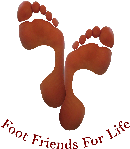Orthotics
What are orthotics?
Orthotics are specially designed devices which are worn inside the shoe to control abnormal foot function and/or accommodate painful areas of the feet.
They hold the foot in a corrected position, thereby controlling abnormal muscle and joint function.
They are rigid, made from thermoplastics which can withstand abnormal forces on the foot without losing their shape. (Soft orthotics, which are sold off-the-shelf in chemists and other outlets, cannot do this.)
How long do orthotics last?
Rigid orthotics normally last for 2-3 years, depending on the correction required. Body weight, the degree of foot abnormality, footwear, activity and the surface areas such as grass or pavements, tiles or wooden flooring will also impact of the life span of orthoses. The life of children’s orthotics is limited by growth of the child, so that the orthotics become too short in the same way as shoe size increases with growth.
It is important to have your orthotics checked regularly by your podiatrist. After the initial fitting you should return in 4 weeks to determine the clinical results of treatment as well as how the prescription has been controlling the foot function.
After the 4 week review of your orthotics,3 months review then 6-monthly reviews are recommended.
Additions to orthotics such as top covers and extensions may require periodic replacement through normal wear and tear.
The controlling posts that determine the range of motion prescribed can be replaced if they begin to wear. This will remove excessive stress from the shell of the orthotic and increase the life of the orthotic.
What sort of problems are orthotics recommended for?
Foot pain due to abnormal function of the foot.
Foot and leg pain due to overuse of muscles.
Knee pain due to abnormal foot position, eg pronation or supination.
Corns and callus under the foot resulting from "dropped" metatarsal bones causing too much weight on that part of the foot, or overloading on a particular part of the foot during standing or walking.
Growing pains in children where the bones grow first, muscles and ligaments catch up later, affecting heels and knees particularly. Active children can put an excessive load on those areas causing painful inflammatory conditions.
Heel pain and heel spurs. The orthotic holds the arch up and controls excessive pronation, thus preventing the arch from collapsing. Stretching of the plantar fascia under the foot can cause arch pain.
NOTE: Orthotics will not change the underlying structure of the adult foot. They will control the position and motion of your foot and this may prevent pain and disability, often with a dramatic improvement in foot symptoms. If orthotics are not worn, abnormal function will immediately return.
